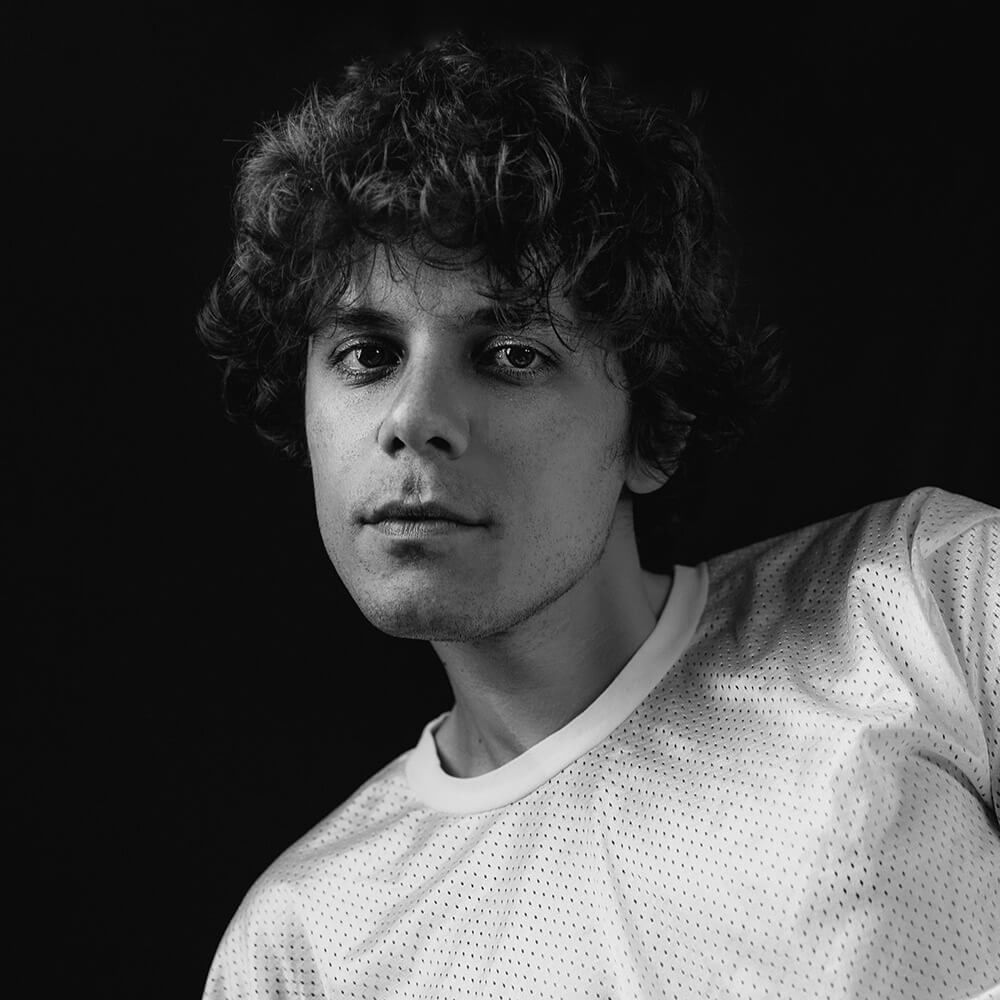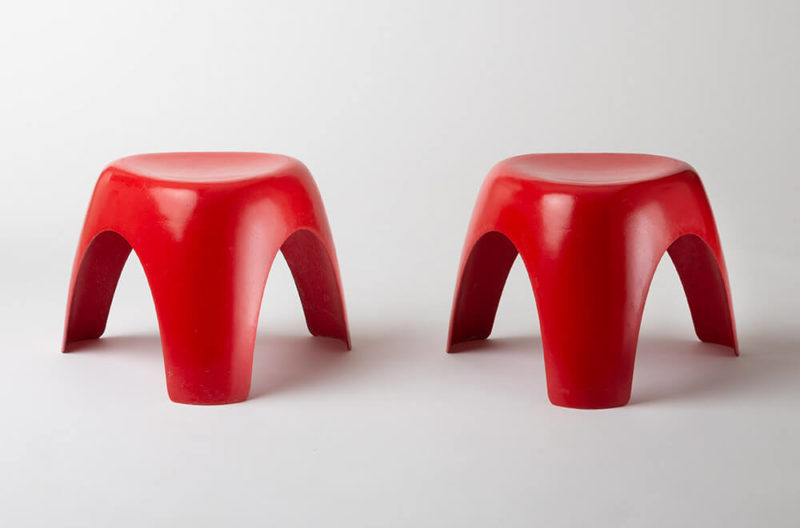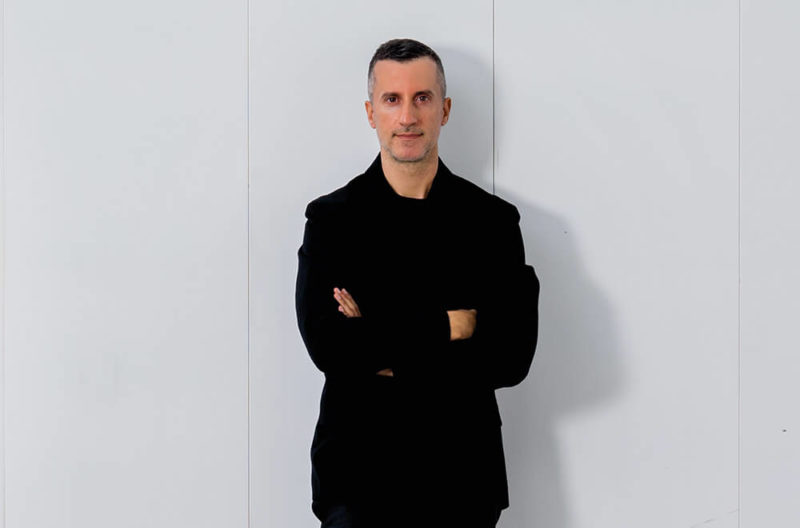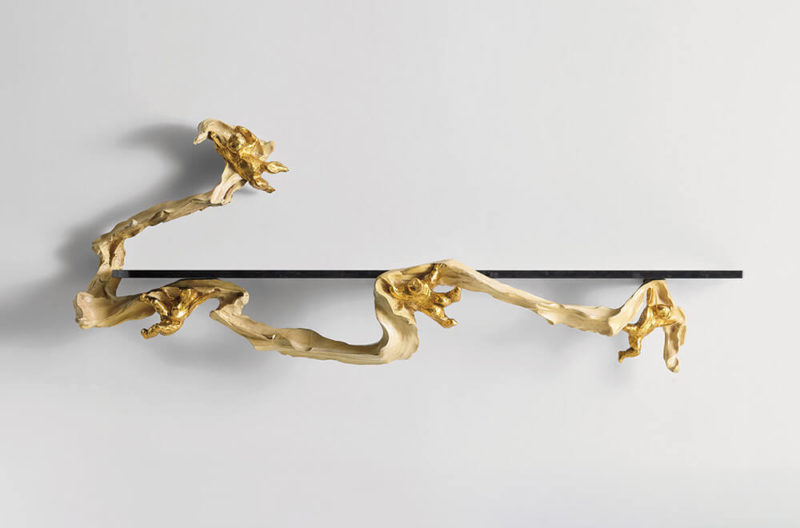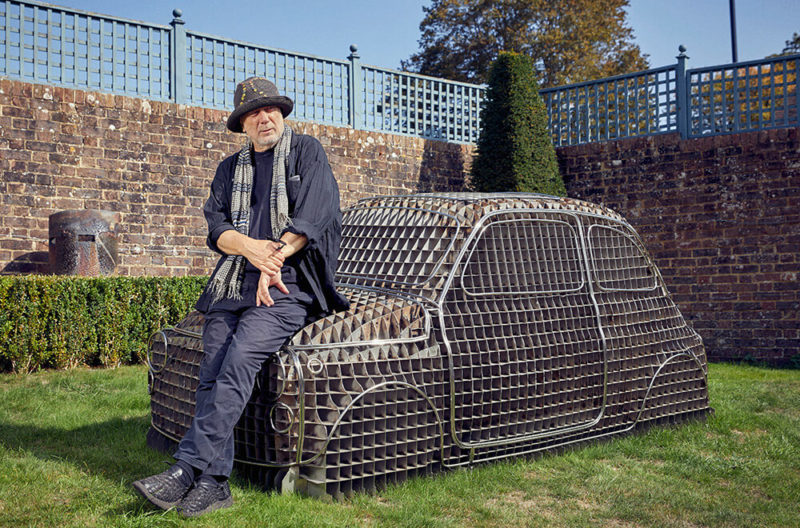Istanbul Design Biennial 2020
From a floating garden to a revolutionary wood-stove, this biennial brings a wide range of thought-provoking work.
‘Empathy Revisited: Designs for more than one’
Open to public, free of charge, across Istanbul
Until the end of May 2021
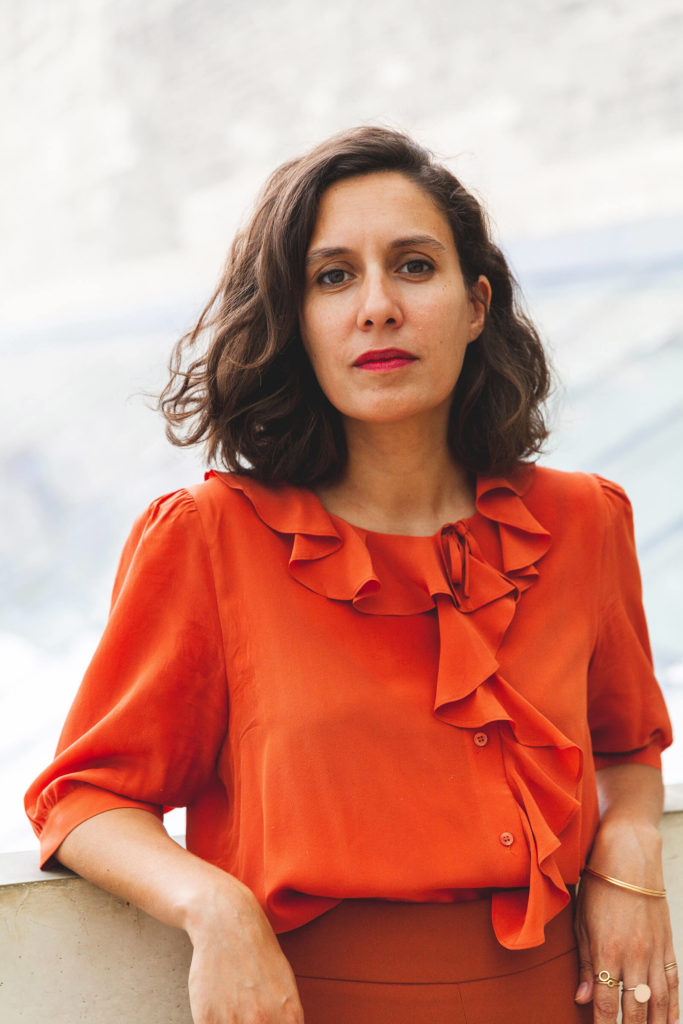
Curator, Mariana Pestana
COURTESY: Istanbul Foundation for Culture and Arts (İKSV)
“The sky turns into a similar milky orange with the sunset,” says the Portuguese architect and curator Mariana Pestana, about one of many shared characteristics she observes between Lisbon and Istanbul, where she has organised the ongoing 5th Istanbul Design Biennial. Now based in Porto after living in London for over a decade, Pestana’s curatorial vision for the six-month-long biennial has been shaped above all by the radically changed notions of locality and globalism that art and design sectors have experienced during the pandemic. Its title – Empathy Revisited: designs for more than one – signals a determined psychological shift, with the projects on display encouraging participants to rethink the way we take care of each other and live together, in society.
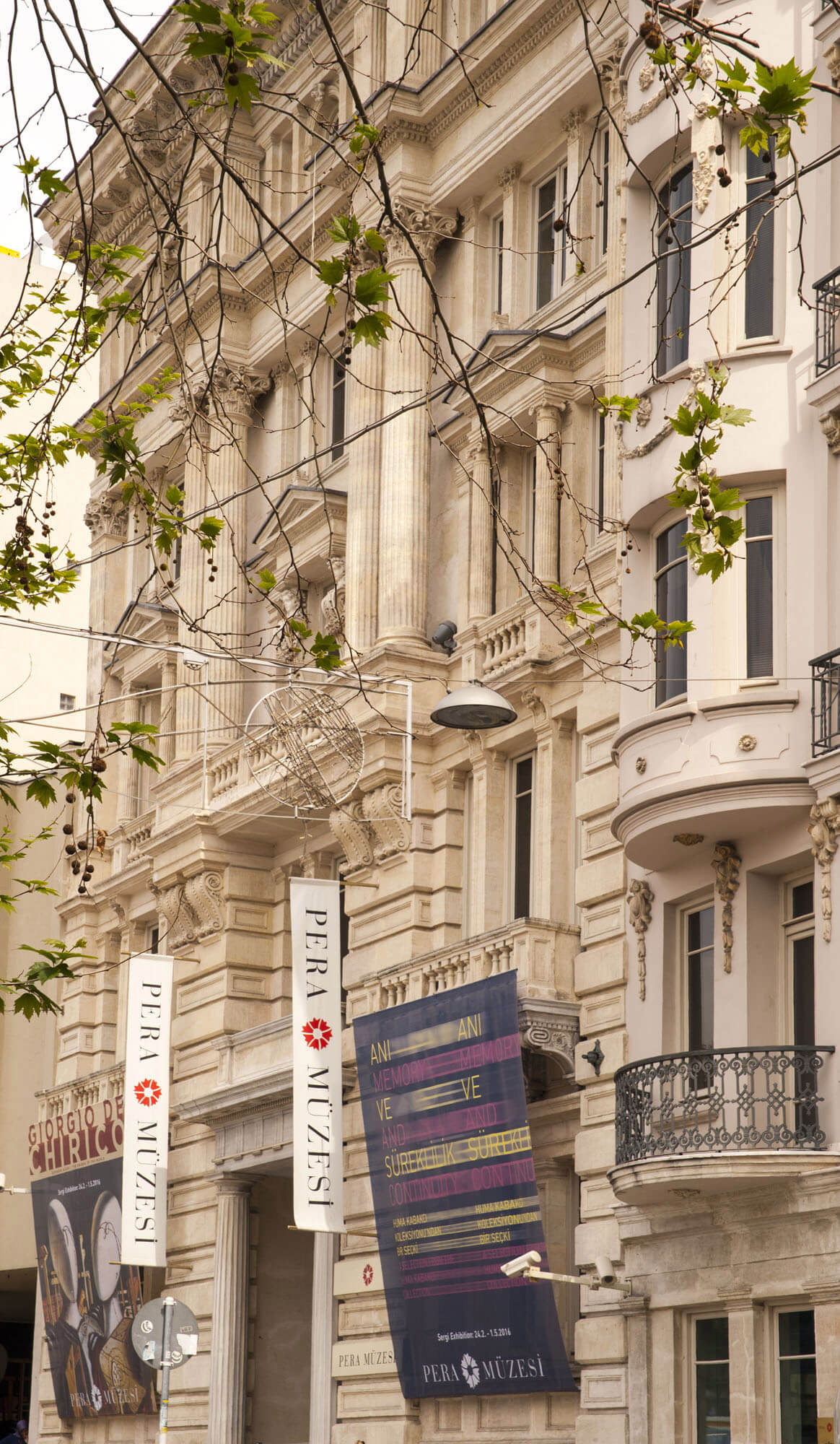
Pera Museum, Istanbul
COURTESY: Istanbul Foundation for Culture and Arts (İKSV)
The planes zigzagging between continents, venues brimming with global crowds, and bombastic productions parachuting into discovery destinations are currently unviable. “In this very different climate, we had to think about the legacy of a biennial and what we leave behind,” Pestana explains, over the phone with The Design Edit. Her response lies in the show’s subtitle – ‘Designs for more than one’ – as much as its principal word, ‘Empathy’. The curator’s notion of empathy encompasses what she calls “all the entities that are affected by design.” This is particularly apt in a city where the water slices the land into two continents and seagulls and cats inhabit every corner: “Being a citizen of Istanbul and a part of the community is not just a human experience,” she says, “it’s also for the city’s animals, vegetables, and even minerals.”
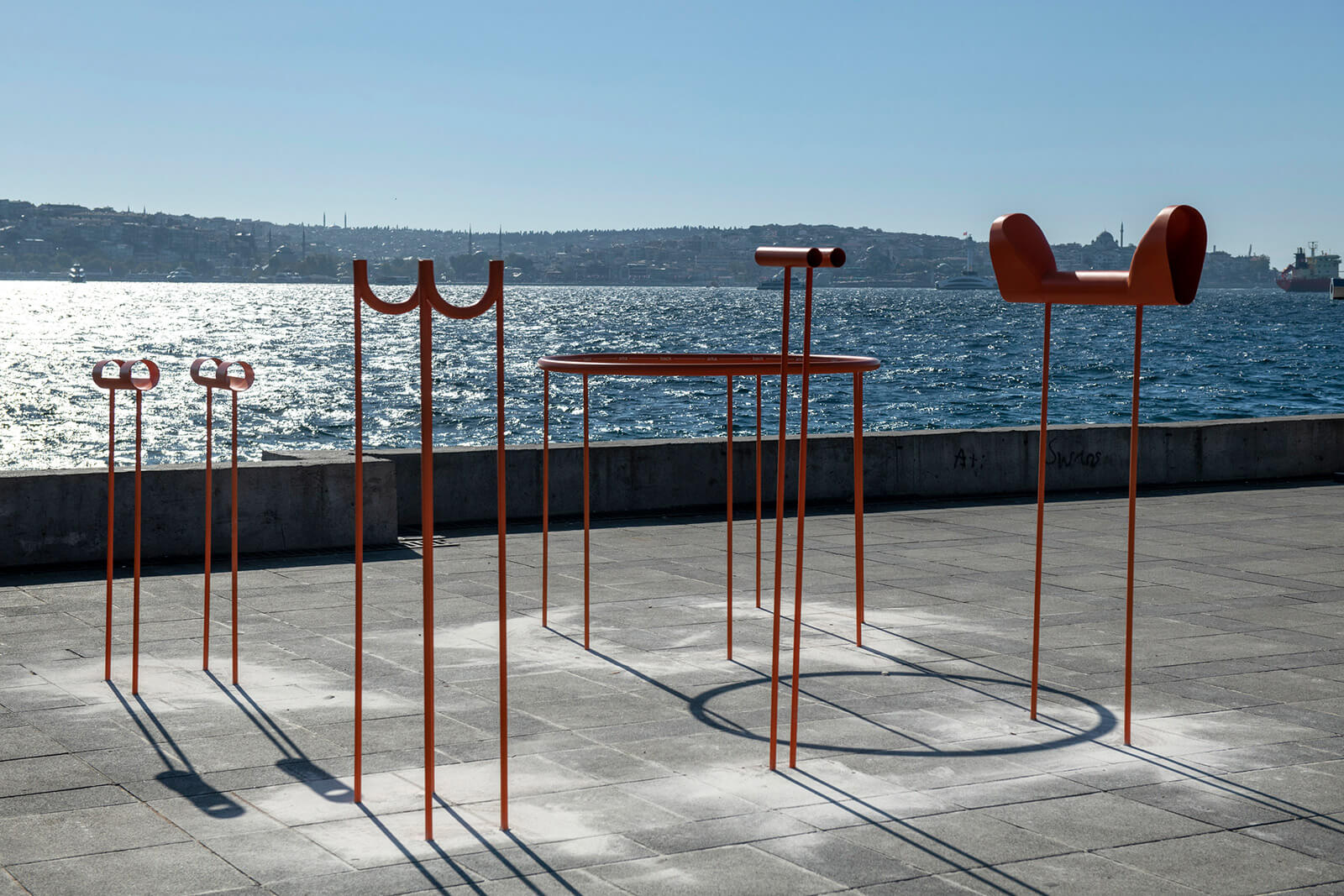
Soraia Teixeira, ‘Public Devices for Therapy, 2020
COURTESY: Istanbul Foundation for Culture and Arts (İKSV) / PHOTOGRAPH: Kayhan Kaygusuz
This interspecies sensibility accompanies scrutiny of the costs of manufacturing and a concern for the legacy of the spectacle. This biennial has eschewed shipping in loads of crates and hiring foreign workforce; instead it has invested in local makers for 90% of the production. The designs left behind when the show closes at the end of spring will be donated to different municipalities across the city for permanent use in parks, piers, and squares. “The works will become compositions for the city,” Pestana hopes. Her experience of local collaboration comes from her London-based interdisciplinary design collective, The Decorators, but this is her most extensive experiment with local engagement on a large scale.
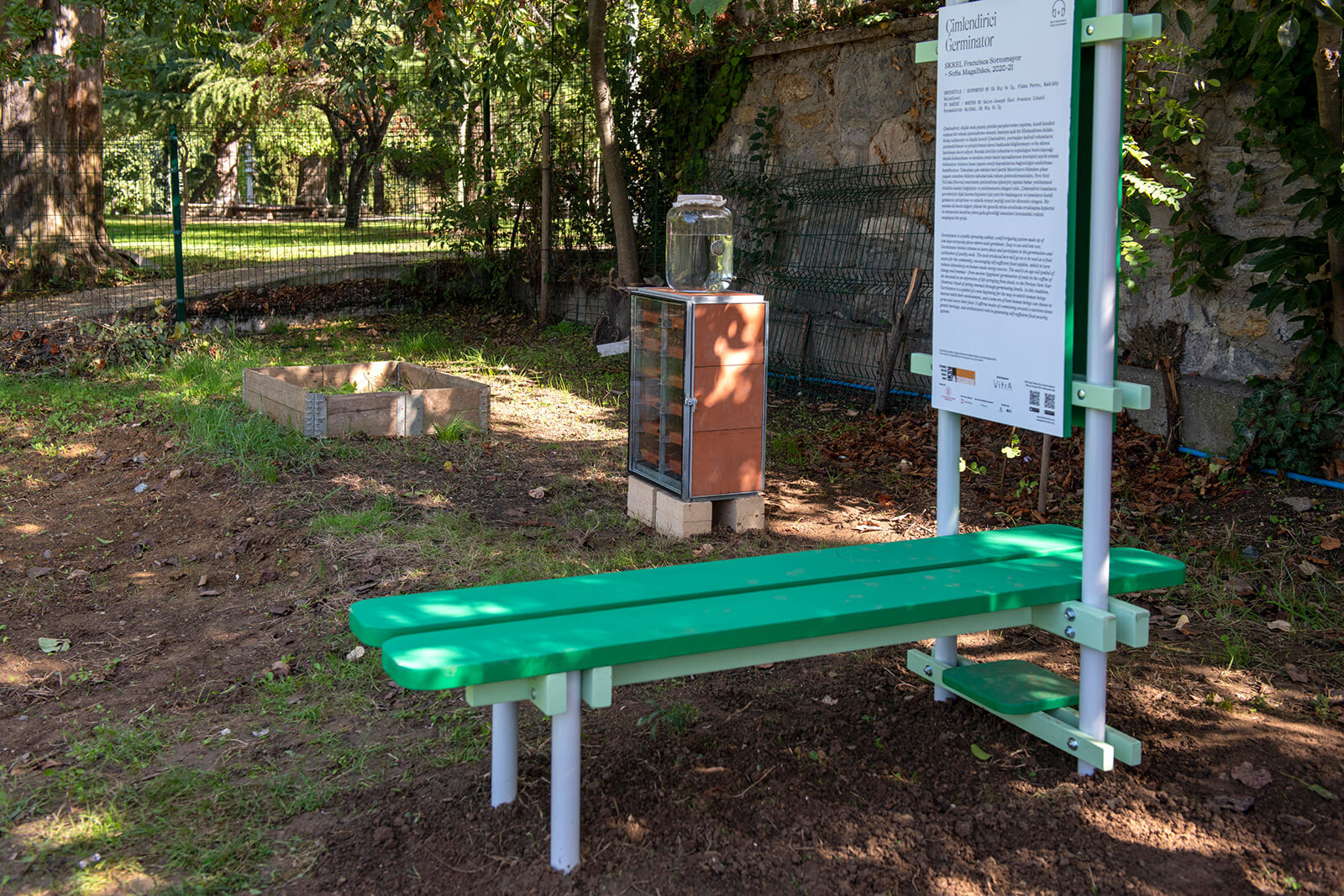
Skrei, ‘The Germinator’, 2020
COURTESY: Istanbul Foundation for Culture and Arts (İKSV) / PHOTOGRAPH: Kayhan Kaygusuz
Pestana has taken a critical stance on her own role, also, as an outsider. “I’ve known this city through the novels of Orhan Pamuk, but I knew from the beginning that I had to invite collaborators,” she says. In this vein, she formed Young Curators Group, a trio of Istanbul-based women curators Ulya Soley, Nur Horasanli and Eylül Şenses, to facilitate a deeper connection with the city’s social and cultural dynamics. Soley, for example, worked closely with local women-run dance organisations – from hip hop to modern dance – to activate Stockholm-based design group Dansbana!’s interactive installation, ‘Dansbana! Kalamis’, at Kalamış Park.
The Design Edit has selected four highlights from over fifty projects spread across nine sites across Istanbul. The projects fall under five sections, including a digital channel.
‘Büyükada Songlines’ by Studio Ossidiana
The ‘New Civic Rituals’ section includes a host of designs peppered across Istanbul’s eclectic urban panorama. These express Pestana’s vision of “design for more than one”. Studio Ossidiana’s floating garden, for instance, will roam the Bosphorus around the Virgin Island, before eventually docking and hosting a series of programmes. “A mobile gathering place for humans but also birds,” is how Pestana explains the Rotterdam-based design firm’s concept, which stems from their interviews with local architects about the island’s indigenous species, including horses, corals and migratory birds. Besides its romantic form which is reminiscent of the Ottomans’ lavish “saltanat kayığı” boats, the garden will be a think-tank for ideas about interspecies life on the island.
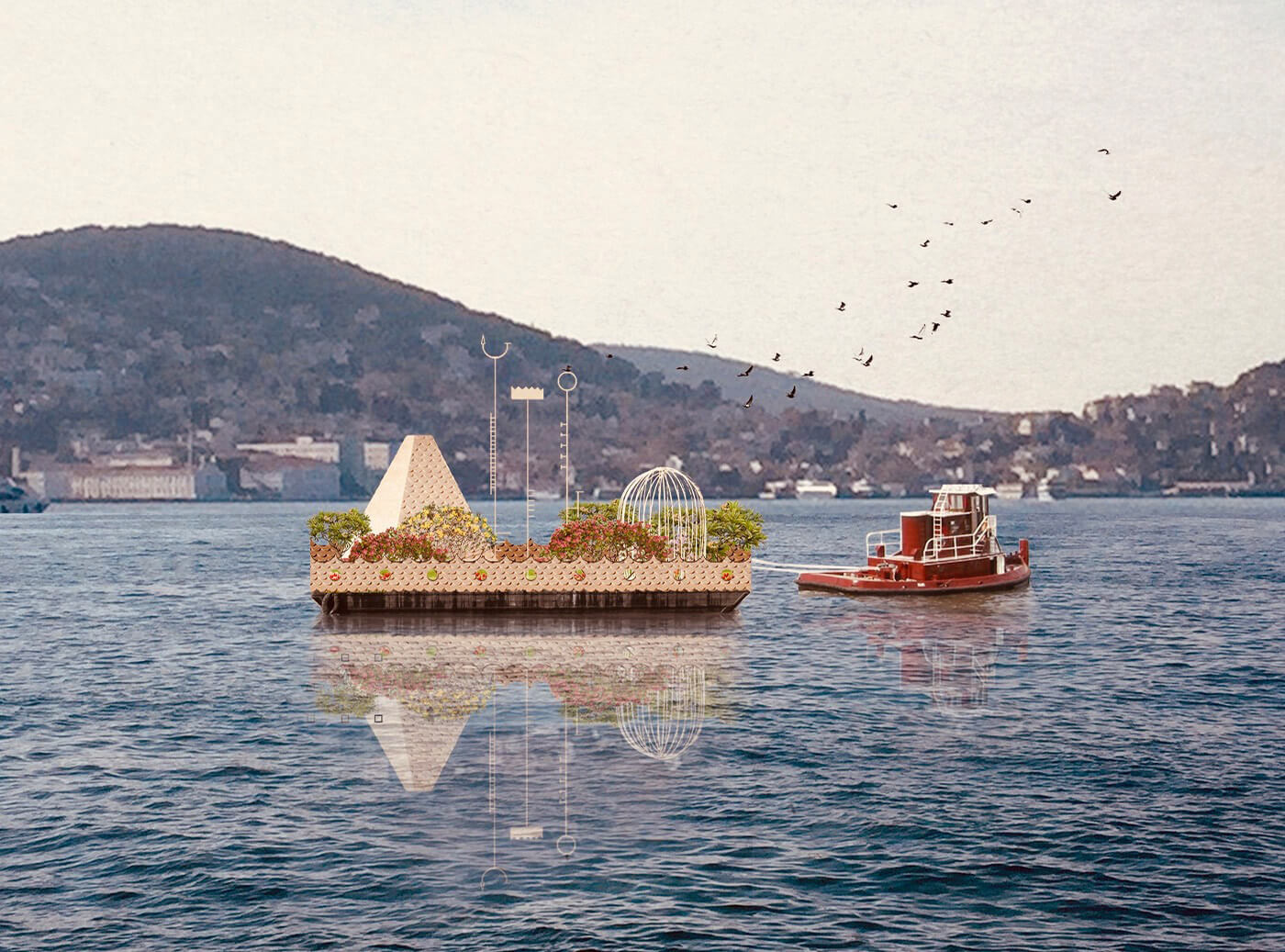
Studio Ossidiana, ‘Buyukada Songlines’, 2020
COURTESY: Istanbul Foundation for Culture and Arts (İKSV)
‘Point Cloud’ by Soft Baroque
London-based design duo Soft Baroque’s seating arrangement on Beşiktaş Piers falls into the biennial’s ‘New Civic Rituals’ section by tapping into the experience of collective repose. The quirky lounge chairs seem benevolent and whimsical with their DNA-like forms, but their homage to science goes beyond the physical. Each chair replicates an alternative combination of a point cloud phenomenon and disturbs the sitter with questions about potential futures: such as machine sovereignty and the demise of human intelligence and labour, which may or may not start with design production in the near future. Echoing Pestana’s understanding of empathy as “a call for an emotional engagement with the world around us, even in the face of a global crisis,” the chairs vividly embody that duality by both embracing and provoking the user.
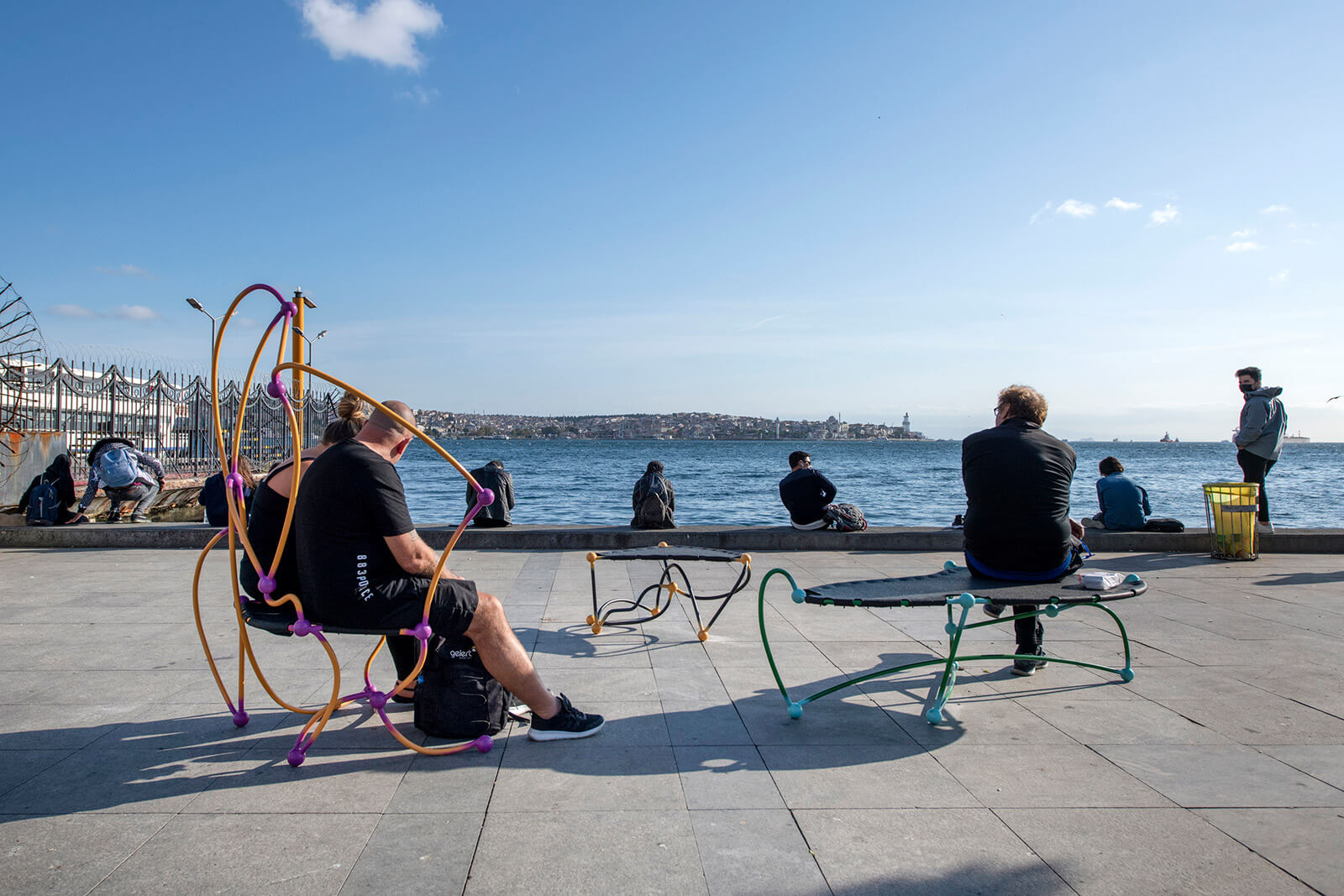
Soft Baroque, ‘Point Cloud’, 2020
COURTESY: Istanbul Foundation for Culture and Arts (İKSV) / PHOTOGRAPH: Kayhan Kaygusuz
‘Sobya’t Thawra – The Revolution Woodstove’ by Bits to Atoms + Beirut Makers
Also included in the ‘New Civic Rituals’ section, Beirut-based architecture practice Bits to Atoms originally designed this steel stove, entitled ‘Sobya’t Thawra’, during the protests in Lebanon in late 2019. An ode to solidarity in the form of fire that heats and cooks, the work has been recreated based on a CAD file and has been perched by the Bosphorus. Meaning “revolution stove” in Arabic, the vertical burner is a salute to a transhistorical lineage of social movements and protests; however, the enduring legacy of Gezi Park protests in Istanbul and further afield renders this iteration particularly poignant – as well as the pandemic-induced social alienation experienced by all. The stove’s uses range from brewing Turkish coffee, to providing a focus for Eylül Şenses’s workshops about local architecture.
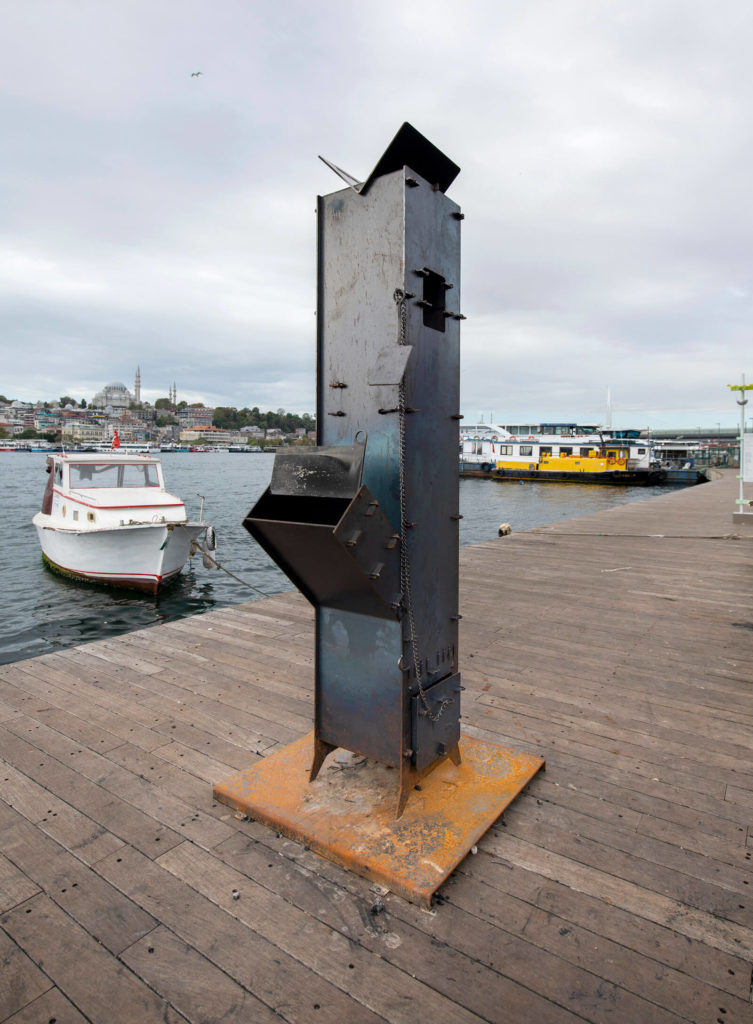
Bits to Atoms +BeiruitMakers Sobya’t Thawra, ‘The Revolution Woodstove’, 2020
COURTESY: Istanbul Foundation for Culture and Arts (İKSV) / PHOTOGRAPH: Kayhan Kaygusuz
‘Earthable’ by Aslihan Demirtaş
The projects under the ‘Library of Land & Sea’ section closely examine our relationship to earth and water through the Mediterranean and its lush geology, as well as its myths. Istanbul-based architect Aslıhan Demirtaş’s living soil structure, ‘Earthable’, furthers Pestana’s commitment to “all”, beyond the human, with an ambiguously purposed structure. The horizontal, geometric wooden form’s resemblance to a table still hints at the possibility of human use – however, it’s soil-filled surface hinders this utilitarian aspect but opens possibilities for biological growth. An inspiration for the project has been the urban agriculture models spontaneously invented during the pandemic. “People are growing vegetables on their balconies,” Pestana notes, and Demirtaş’s structure is a testimony to this effort at self-sufficiency and a personal relationship with earth.
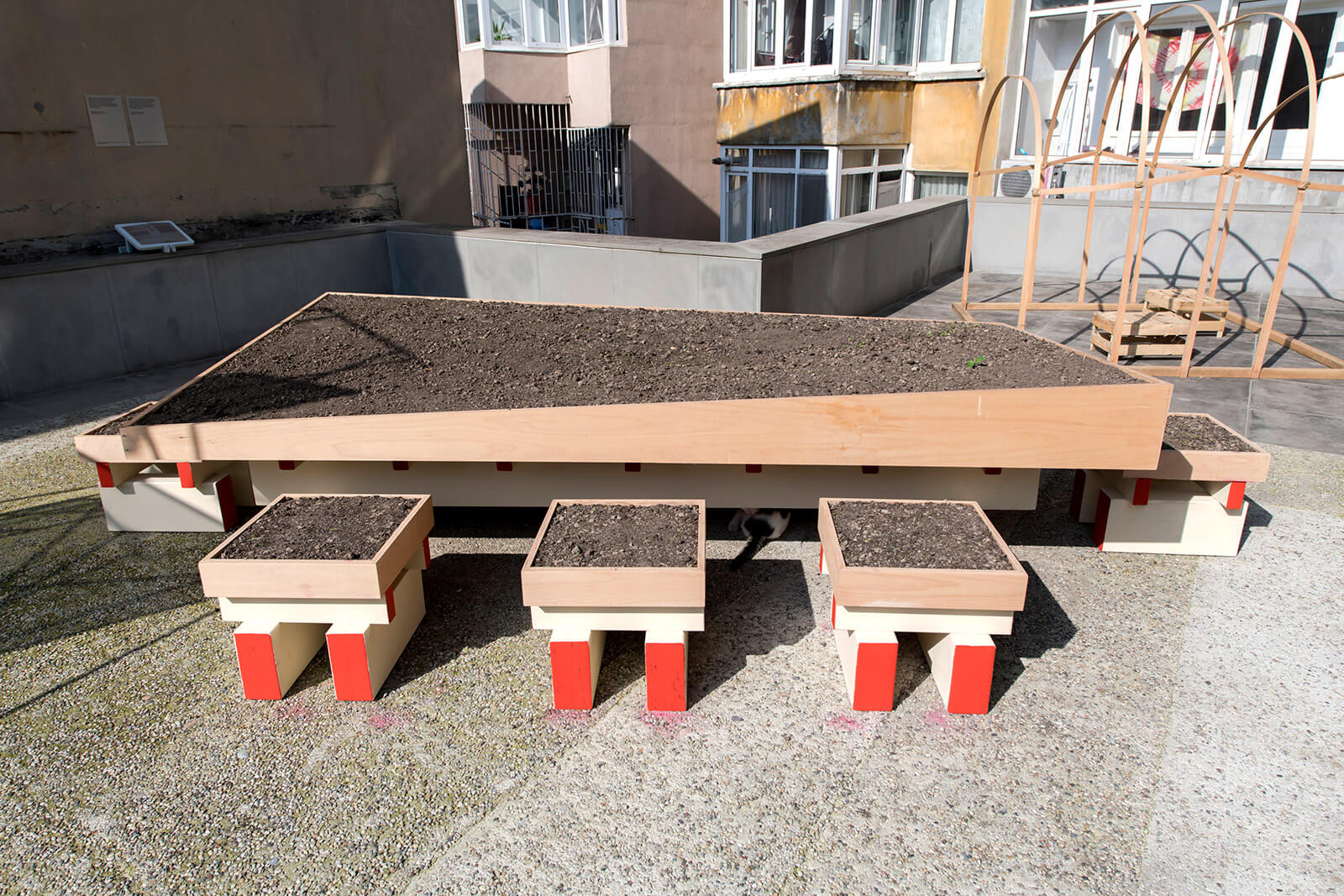
Aslihan Demirtaş, ‘Earthable’, 2020
COURTESY: Istanbul Foundation for Culture and Arts (İKSV) / PHOTOGRAPH: Kayhan Kaygusuz
Istanbul Design Biennial – brings together ideas and projects in search of a new role based on empathy for design.
Studio Ossidiana – an award-winning practice in architecture, design and research led by Alessandra Covini and Giovanni Bellotti.
Soft Baroque – Nicholas Gardner and Saša Štucin work simultaneously in object design and art.
Bits to Atoms – award-winning architecture practice with a research-based approach to digital design and robotic fabrication.
Beirut Makers – an open collective that focuses on digital fabrication as a response to the recent violent changes in Lebanon’s environment. The collective created designs rethinking both the process of making and the materials.
Aslihan Demirtaş – her practice purposefully crosses territories and boundaries of disciplines in the forms of building, landscape and installation projects, exhibitions, and art projects, as well as research.
